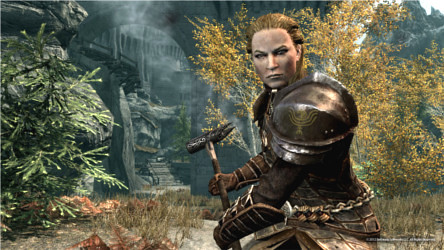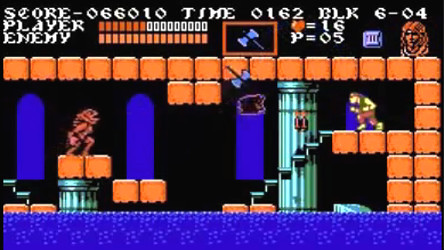Music has become an essential part of the video game experience. Developers and composers have managed to make stories more compelling and challenges more attractive with the help of carefully designed soundtracks. Games like Ninja Gaiden for the NES or successful series like Metal Gear or Bioshock probably wouldn´t be the same without the beautiful music especially prepared for them. However, we still know very little about the how and why music affect us the way it does. Why does some songs seem playful and other serious? Why some music make us hurry while other tends to relax us? And if music is capable of affecting how we feel, could it also makes us better players?
Let’s start by talking about the relationship between music and emotions. Video game music is frequently associated with positive affect. The highly motivational theme we hear while waiting for a Battlefield map to load or the playful tune we listen to in the wizard town of Mysidia in Final Fantasy IV are good examples. But music can also be used to provoke negative feelings. The presence of music, for example, was shown to increase stress levels in a group of people playing Quake III (Hébert, Renée, Dionne-Fournelle, Crete & Lupien, 2005). It was also found to make players less relaxed and increase how dangerous everything felt in The Lord of the Rings: The Two Towers game (Lipscomb & Zehnder, 2004). This suggest that listening to certain types of music can make players feel more afraid of negative in-game events, like being shot by the enemy or falling off a cliff. This capacity to elicit negative affect isn’t necessarily a bad thing. In Resident Evil 2, for example, the fear of a surprise encounter with an enemy forces players to pay close attention to any suspicious movement or sound, increasing both engagement and emotional involvement. Also, the constant threat of dying and losing all the unsaved progress turns into a profound feeling of relief when a typewriter (a tool used to save the player’s game) is eventually found. So, even when music promotes negative affect, this could indirectly lead to more immersive and rewarding experiences.
 |
| Skyrim’s outdoor theme switches to a more action oriented tune in the presence of an enemy. |
Developers seem to believe that fast paced music can increase the fear and anxiety provoked by an approaching threat. Super Mario Bros. titles, for example, tend to accelerate the speed of music when time is running out. Castlevania III: Dracula’s Curse, on the other hand, uses a high tempo song (appropriately named “Pressure”) in a level where the player must hurry to escape constantly rising water levels. But how does this work? One possibility is that people use the speed of music as a way to measure time. The faster it goes, the more it feels like additional time has passed. This could also make us feel like we are moving slowly. The idea seems to be congruent with an experiment in which fast paced music made players drive faster in a racing game (Cassidy & MacDonald, 2010). So, if you are running away from an enemy, then chances are a fast song will make you feel like you are about to lose your life.
 |
| Castlevania III added a high-tempo song to a flooding level to increase the feeling of an approaching threat. |
While altering tempo seems to be a very reliable way to affect gameplay, media producers also depend heavily on the use of highly arousing music. This is especially obvious in the trailers for summer blockbusters, were intense compositions are used to transmit a feeling that something great and important is happening (just watch the theatrical trailer for Sam Raimi’s Spiderman 2). Video games are no exception. Arousing music tends to accompany the most important events in a level or game. Scenes like the Battle of Stalingrad in the original Call of Duty wouldn’t have transmitted such strong emotions if it wasn’t for the epic but sad theme that played in the background. However, this type of songs might not go with every type of game. People playing Project Gotham Racing 3, for example, found high arousal music less appropriate and enjoyable as well as more distracting than low arousal songs (Cassidy & MacDonald, 2010). It also made them reach higher speeds and achieve shorter lap times, as well as hit more obstacles (Cassidy & MacDonald, 2010). This is congruent with the idea that highly arousing music motivates individuals to act with more energy and speed, but also more recklessly. So if you want start a carefully planned campaign in a Real Time Strategy game, we don’t recommend listening to John Williams´ “Duel of Fates”.
 |
| Highly arousing music made players go faster but also more reckless in Project Gotham Racing 3. |
As we have seen there are different ways to influence the player’s emotions and behavior through music. Video game companies know this and invest a considerable amount of resources in designing the best possible soundtrack. This involves carefully matching different styles of songs to specific types of games or scenes: A heavy metal song may go well with violent action scenes as well as a theme of revenge, but it may feel out of place in a stealth mission or a scene depicting the dead of a beloved character. Still, some players think games should give users the option to listen to their own music. This would allow them to build a more personalized experience, choosing less distracting and more arousing songs, eventually increasing both engagement and emotional involvement. In the previous experiment, for example, listening to self-selected music was not only preferred but also improved the participants ability to avoid obstacles randomly placed in the racing track (Cassidy and MacDonald, 2010). Also, incongruence between soundtrack and audiovisual content seems to have a very limited effect in immersion, the feeling of being inside the content and how realistic the events depicted seem; at least in the case of movies (Petey, Campanella, Rubenking, Buncher & Gress, 2010). Still, developers won’t necessarily appreciate the idea of having less control over the final feel of their product and additional evidence would be required before most of them adopt this approach.
 |
| GTA: San Andreas and WWE 13 allow the the user to add their own music, increasing replay value. |
Research on the relationship between music and the user experience could have an important effect in the future of video games. Especially considering the current interest in the development of soundtracks that adapt to the user’s feelings and behavior. But instead of using this newly acquired knowledge to provoke a more intense experience, developers could just employ it to obtain more precise effects. After all, triggering a very specific sets of emotions or reduce the levels of distraction to improve performance could be enough to make players perceive a significant improvement in video game quality. Findings could also be applied to different fields like the use of music in work-place to reduce stress without affecting performance. In the end research about video game soundtracks could end up affecting not only how we play at home, but also how we spend our time in the office.
References:
Cassidy, G. G. & MacDonald, R. A. R. (2010). The effects of music on time perception and performance of a driving game. Scandinavian Journal of Psychology, 51(6), 255-464. doi: 10.1111/j.1467-9450.2010.00830.x.
Hébert, S., Renée, B., Dionne-Fournelle, O., Crete, M., & Lupien, J. (2005). Physiological stress response to video-game playing: The contribution of built-in music. Life Sciences, 76(20), 2371-2380
Lipscomb S. D. & Zehnder, S. M. (2004). Immersion in the virtual environment: The effect of a musical score on the video gaming experience. Journal of Physiological Anthropology and Applied Human Science, 23(6), 337-343.
Petey, G., Campanella, C., Rubenking, B., Buncher, M., & Gress, E. (2010). Telepresence, soundscapes and technological expectation: Putting the observer into the equation. Virtual Reality, 14(1), 15-24. doi: 10.1007/s10055-009-0148-8

